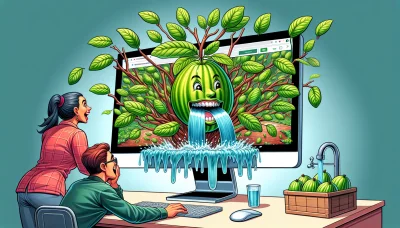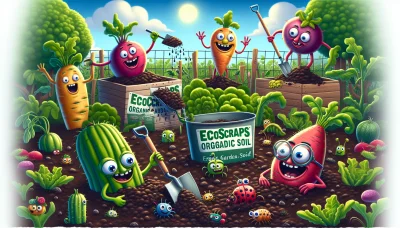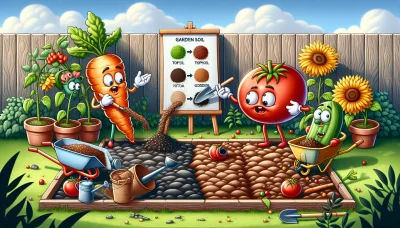What are paw paws Quiz
Test Your Knowledge
Question of
What Are Paw Paws?
Paw paws, scientifically known as Asimina triloba, are a small deciduous tree native to the eastern United States and Canada. They belong to the Annonaceae family, which is closely related to the tropical custard apple family. Paw paws produce large, green fruits that are the largest edible fruit native to America. The fruits have a creamy texture and a tropical flavor, often compared to bananas, mangoes, and melons. The trees are also known for their distinctive maroon flowers and large, drooping leaves, which can provide a tropical appearance to temperate landscapes.
The History of Paw Paws
The Paw Paw, often referred to as the American custard apple, has a rich history that dates back centuries on the North American continent. Indigenous to the eastern United States, this fruit has been a staple in the diet of numerous Native American tribes long before European settlers arrived. The Paw Paw's unique flavor and nutritional benefits made it highly valued among these communities. Historical records indicate that Native Americans not only consumed the fruit but also used parts of the paw paw tree for medicinal purposes. With the arrival of European settlers, the paw paw continued to be an important food source, especially in rural areas. Despite its historical significance and popularity in certain regions, the paw paw has remained relatively unknown to much of the wider world, often overshadowed by more common fruits. However, in recent years, there has been a resurgence of interest in paw paws, leading to increased cultivation and appreciation of this unique piece of America's botanical heritage.
How to Grow Paw Paws
- Choose a suitable location in your garden that receives full sun to partial shade.
- Ensure the soil is fertile, well-drained, and slightly acidic. Amend the soil with compost if necessary.
- Plant paw paw trees in the spring, spacing them 15 to 20 feet apart to allow for adequate air circulation and sunlight exposure.
- Water the trees deeply and regularly, especially during dry spells, to keep the soil consistently moist but not waterlogged.
- Apply a layer of mulch around the base of the trees to help retain soil moisture, regulate soil temperature, and suppress weeds.
- Fertilize the trees in early spring with a balanced, slow-release fertilizer to support healthy growth and fruit production.
- Prune the trees in late winter or early spring to remove any dead or damaged branches and to encourage a strong, productive structure.
- Protect the trees from pests and diseases by monitoring regularly and applying organic or chemical controls as needed.
- Harvest paw paws when they are soft to the touch and have a strong, fruity smell, typically in late summer or early fall.
Paw Paw Varieties
| Variety | Characteristics | Growing Conditions |
|---|---|---|
| Sunflower | Self-fertile, produces large, sweet fruit | Full sun, well-drained soil |
| Pennsylvania Golden | Early ripening, golden-yellow fruit | Full to partial sun, tolerates various soil types |
| Mango | Large fruit with mango-like taste | Full sun, rich, well-drained soil |
| Susquehanna | Large, sweet, and richly flavored fruit | Full sun, well-drained soil, good air circulation |
| Shenandoah | High-yield, creamy texture, excellent flavor | Full sun to partial shade, well-drained soil |
Benefits of Paw Paws
Paw Paws, also known as Asimina triloba, are a hidden gem in the fruit world, offering a wealth of nutritional benefits and versatile uses in both cooking and medicine. Rich in vitamins, especially vitamin C and magnesium, they support the immune system and aid in muscle relaxation. Additionally, paw paws are a good source of dietary fiber, which promotes digestive health. Their creamy, custard-like texture and tropical flavor make them an excellent ingredient in smoothies, ice creams, and baked goods, offering a unique twist to traditional recipes. Beyond their culinary appeal, paw paws have been used in traditional medicine for their anti-inflammatory and antioxidant properties, showcasing their potential in supporting overall health and well-being.
Common Challenges in Growing Paw Paws
- Poor Pollination: Paw Paw trees are not self-pollinating, and their flowers are not very attractive to bees. To address this, you can hand pollinate by transferring pollen from the flowers of one tree to another using a small brush.
- Limited Sunlight: While Paw Paw trees can tolerate shade, they produce more fruit in full sunlight. Ensure they are planted in a location where they can receive at least 6 hours of direct sunlight daily.
- Watering Issues: Both overwatering and underwatering can be problematic. Paw Paws prefer moist, well-drained soil. Establish a regular watering schedule and adjust based on rainfall to avoid waterlogged or dry conditions.
- Soil Fertility: Paw Paws are not highly demanding regarding soil fertility, but they do benefit from a layer of mulch to maintain soil moisture and temperature. Adding compost can also help improve soil quality and provide necessary nutrients.
- Pests and Diseases: While generally disease-resistant, Paw Paws can sometimes be affected by pests like pawpaw peduncle borer or diseases such as powdery mildew. Regularly inspect your trees and treat with organic pesticides or fungicides when necessary.
- Frost Damage: Late spring frosts can damage the flowers of Paw Paw trees. To protect them, you can cover smaller trees with frost cloth or use other frost protection methods during unexpected cold snaps.
Where to Find Paw Paw Trees
Paw paw trees, known for their unique fruit and beautiful foliage, can be a delightful addition to any garden. To purchase paw paw trees or seeds, you might want to explore local nurseries specializing in native plants. Online gardening shops are another great resource, offering a wide variety of paw paw tree varieties suitable for different climates and spaces. Additionally, agricultural extension offices or local gardening clubs can provide valuable information on where to find these plants locally and how to grow them successfully in your area.












